-
Car Reviews
- All reviews
- Midsize SUVs
- Small cars
- Utes
- Small SUVs
- Large SUVs
- Large cars
- Sports SUVs
- Sports cars
- Vans
Latest reviews
- Car News
-
Car Comparisons
Latest comparisons
- Chasing Deals
With a facelifted, streamlined lineup and upgraded tech, is the Volkswagen T-Cross one of Australia’s most underappreciated small SUVs?
In the competitive boxing ring of small SUVs, Volkswagen’s T-Cross – the brand’s smallest and most affordable SUV – is about to re-enter the fight after taking some time out for a pep-talk and a fresh lick of paint.
A facelifted model, revealed last year, has finally landed in Australia, bringing with it subtle visual tweaks, a boost in tech and features, as well as a streamlined lineup.

Combined with strong supply, which had previously dried up in anticipation of the facelift, the mid-life update is designed to keep the small SUV – which is some four years into its current first-generation – competitive against formidable opponents like Mazda CX-3, Toyota Yaris Cross, Kia Stonic and Hyundai Venue.
Chasing Cars has previously rated the T-Cross as a competent and likeable small SUV, so how does it hold up in 2024? And is the latest update enough to maintain the SUVs status as a worthy competitor against its fierce competition?
Pre-facelift the T-Cross lineup looked a bit different as it could be had in either Life or Style grades. These could, depending on grade, be optioned with different packs such as a Sound & Vision Package, a Driver Assistance Package and an R-Line styling package.
The facelifted T-Cross lineup omits all of these option packages and bolsters specification across each grade instead, now coming in a simple three-tiered lineup – entry-level Life, mid-spec Style, and a new top-spec R-Line.
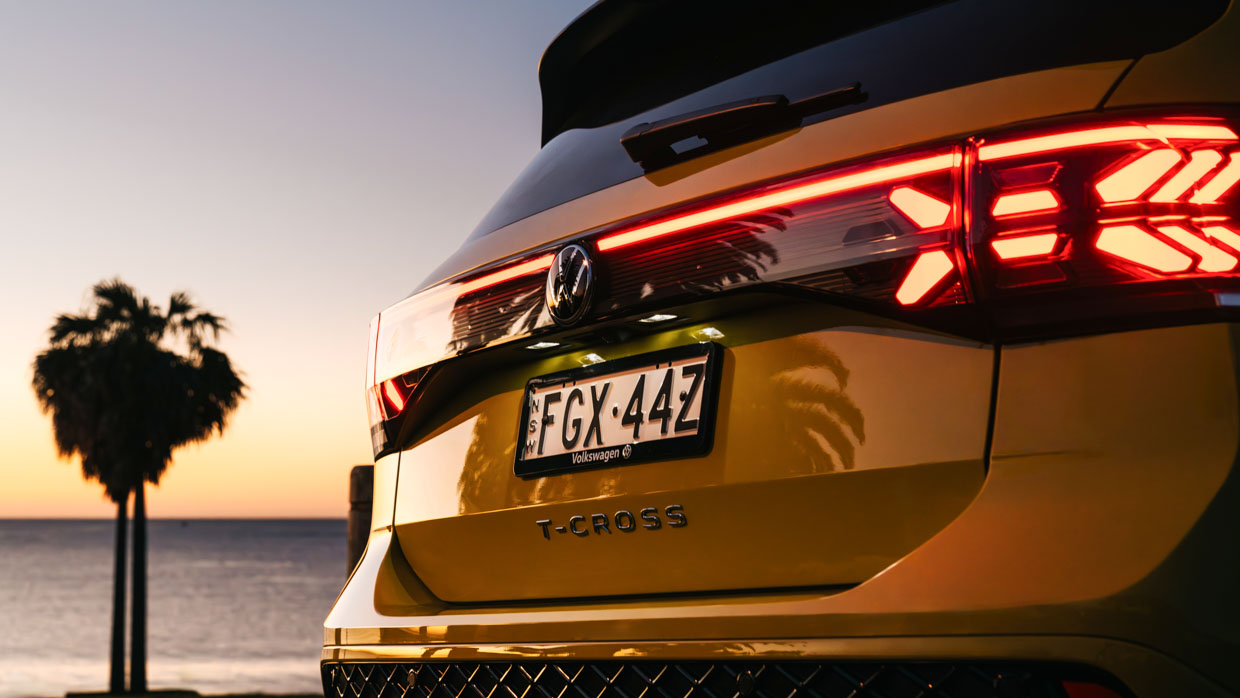
The only option box you have to decide whether to tick or not is metallic or pearl effect paint.
As well as subtle styling tweaks which include new front and rear-bumpers and updated lights, there’s more soft-touch materials in the cabin, new digital instrument displays, as well as more tech, safety and driver assistance.
Naturally, more features means a cost increase, starting with the Life that will now set you back $33,990 before on-road costs. That’s up $3000 compared to the most recent pre-facelift price, though Volkswagen is running an ongoing $34,990 driveaway offer.
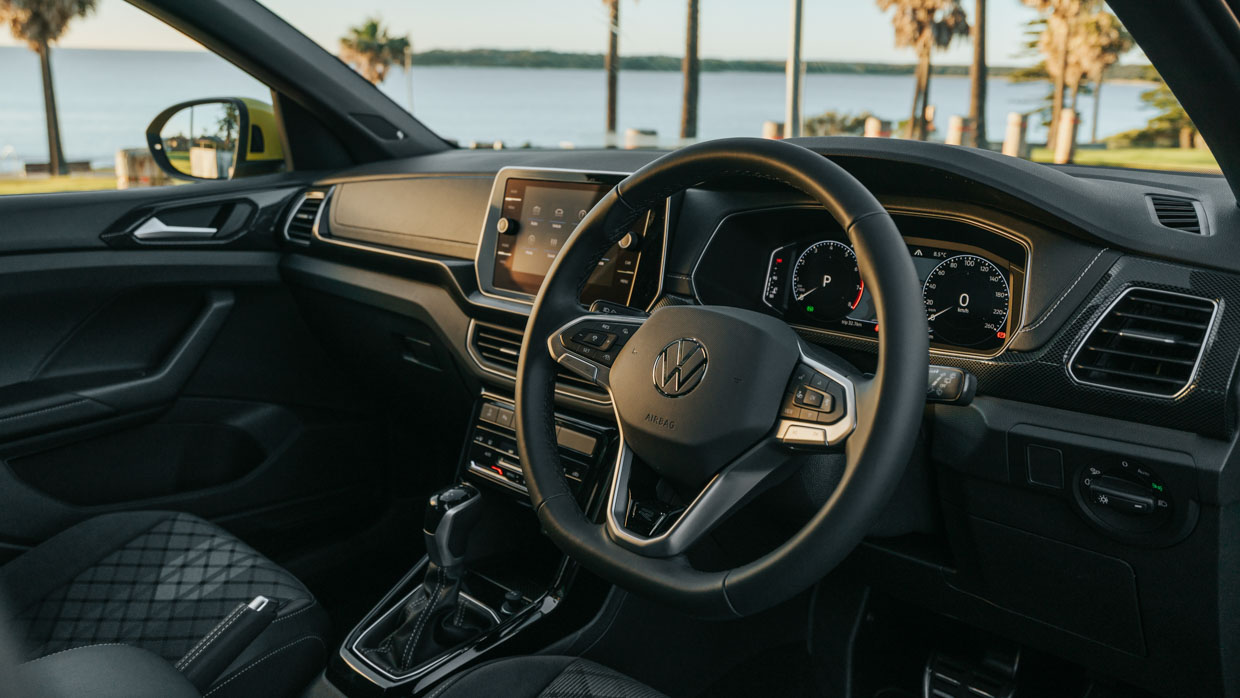
Meanwhile, the Style will set you back $37,490 before on-roads (up $4000), or $39,990 driveaway, and the R-Line will cost you $40,990 before on-roads (up $4900 compared to the previous Style optioned with the old R-Line package), or $43,990 driveaway.
Below is a snapshot of some of the key features this will get you by grade, excluding safety and driver assistance which we’ll discuss a bit later.
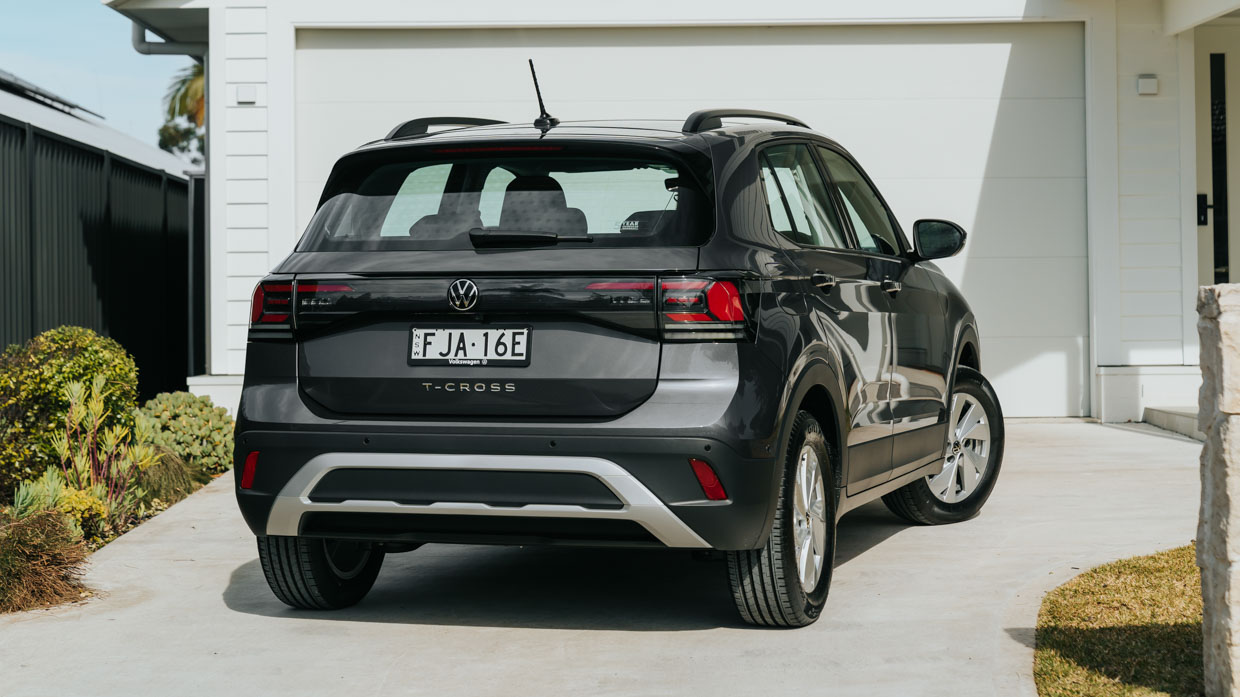
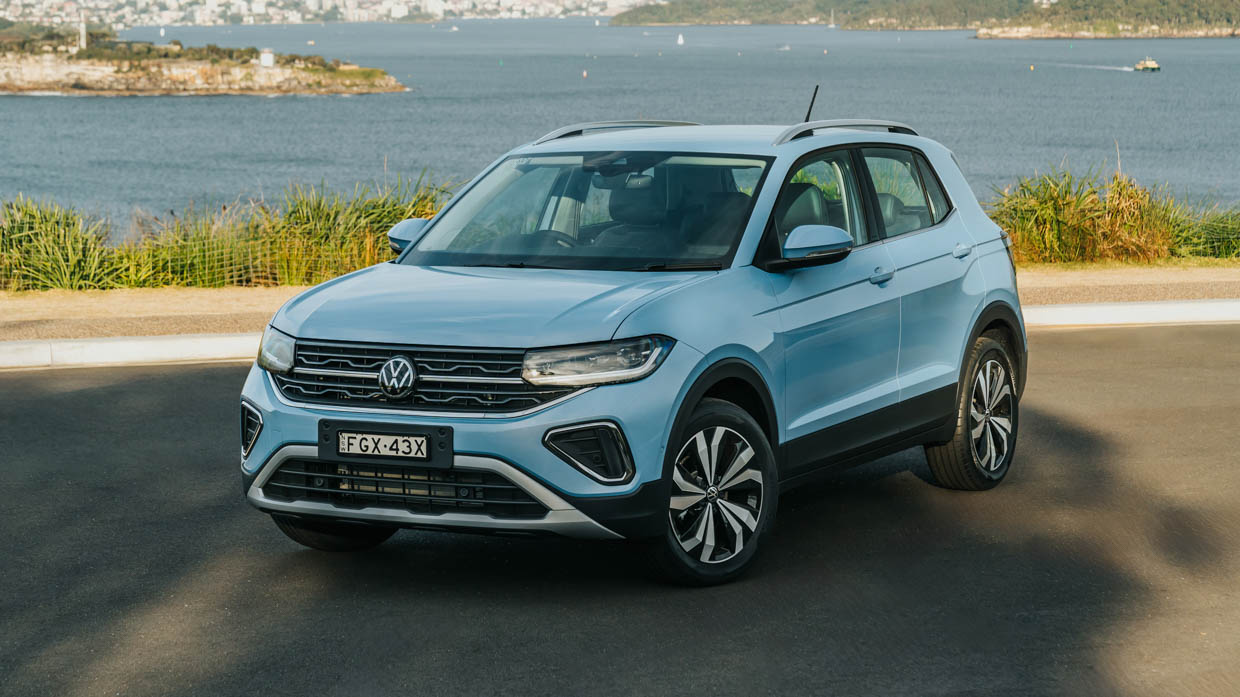
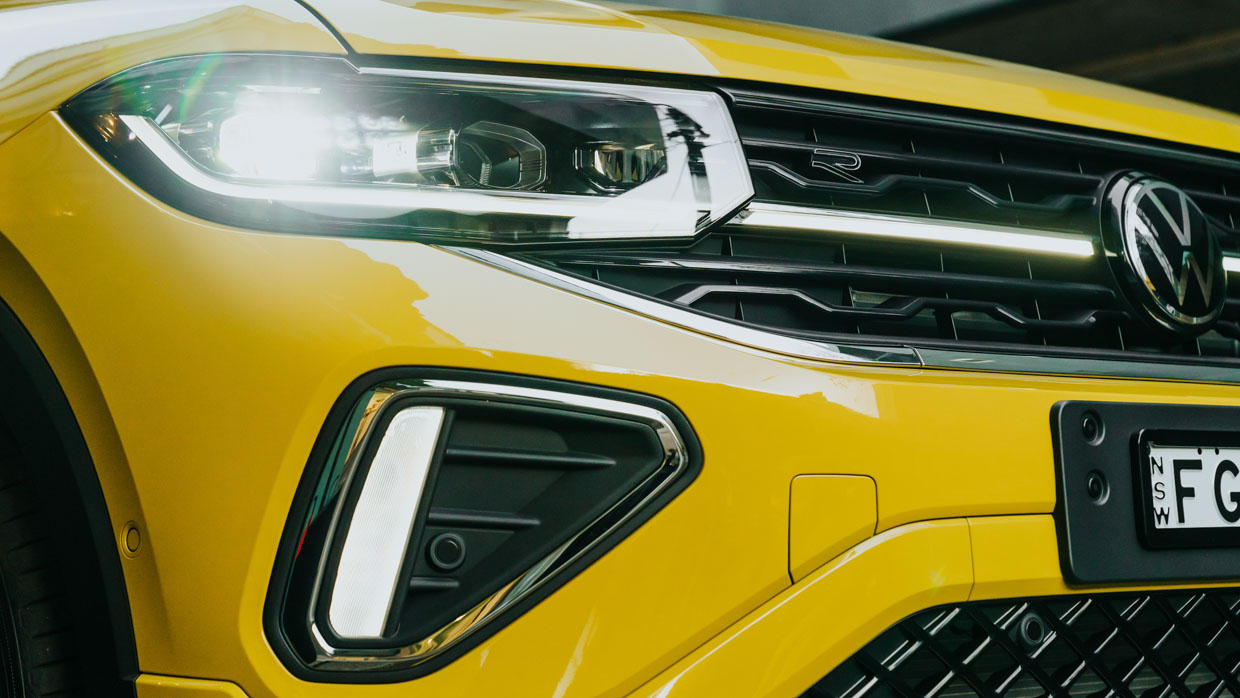
While the Chasing Cars team have previously rated the T-Cross quite highly as an all-round quality SUV – though pricey in comparison to its non-SUV Polo sibling – this was my first time driving the vehicle, a chance to come at it with fresh eyes in context of the updated model to see if I agreed.
As part of our launch drive program we got to sample both the Life and Style grades on a mixture of environments. That included sampling it in its natural habitat navigating inner-city Brisbane traffic, and also a chance to stretch its legs in a more demanding setting on a spirited and demanding windy country loop to Mount Glorious about 80 kilometres out of the city.
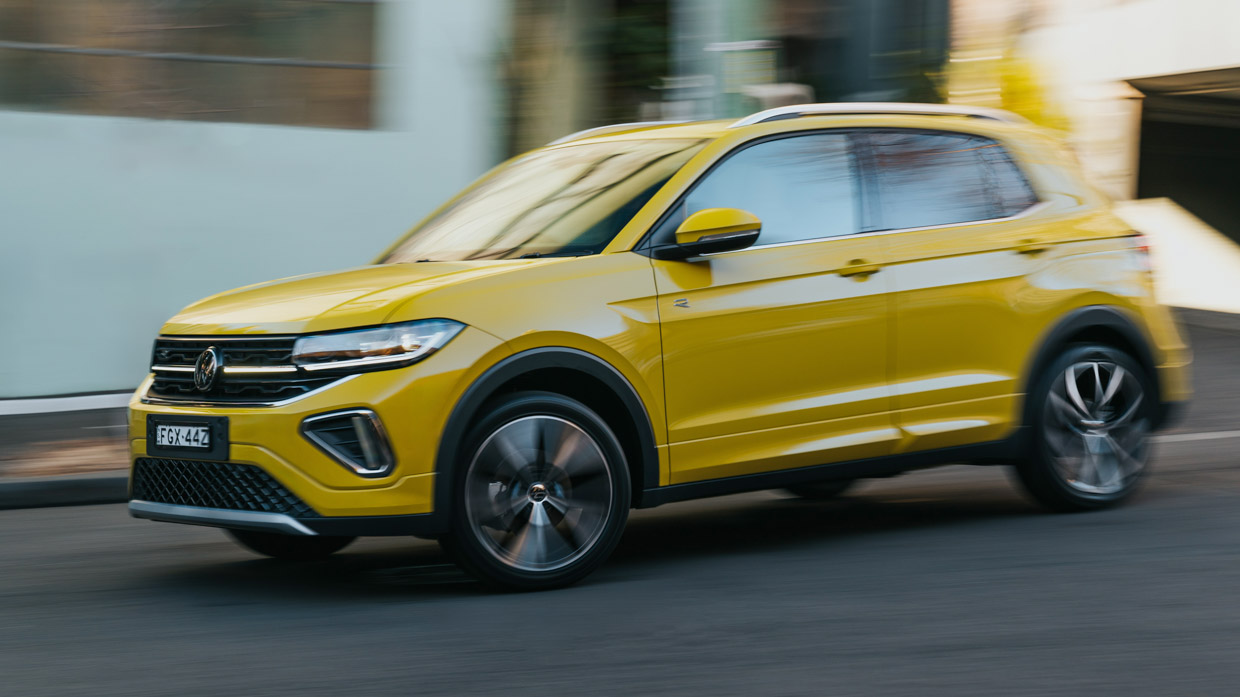
It’s here where it’s important to note what hasn’t changed with the update – the powertrain, which continues as a single proposition across the entire lineup – a 1.0-litre three-cylinder turbo-petrol that makes for 85kW and 200Nm and sends power to the front-wheels via a seven-speed dual-clutch automatic transmission.
Overall, my impressions of the powertrain, and the T-Cross more broadly, were positive.
The 1.0-litre, which also features in the T-Cross’ Skoda Kamiq cousin, won’t set the world on fire in terms of power or torque, with a quoted 10.2-second sprint 0-100km/h. But it is plenty adequate for what this vehicle aims to achieve, moving the 1289kg T-Cross along briskly and easily, with a thrummy, characterful sound when pushed, and a pleasant inoffensiveness when not.
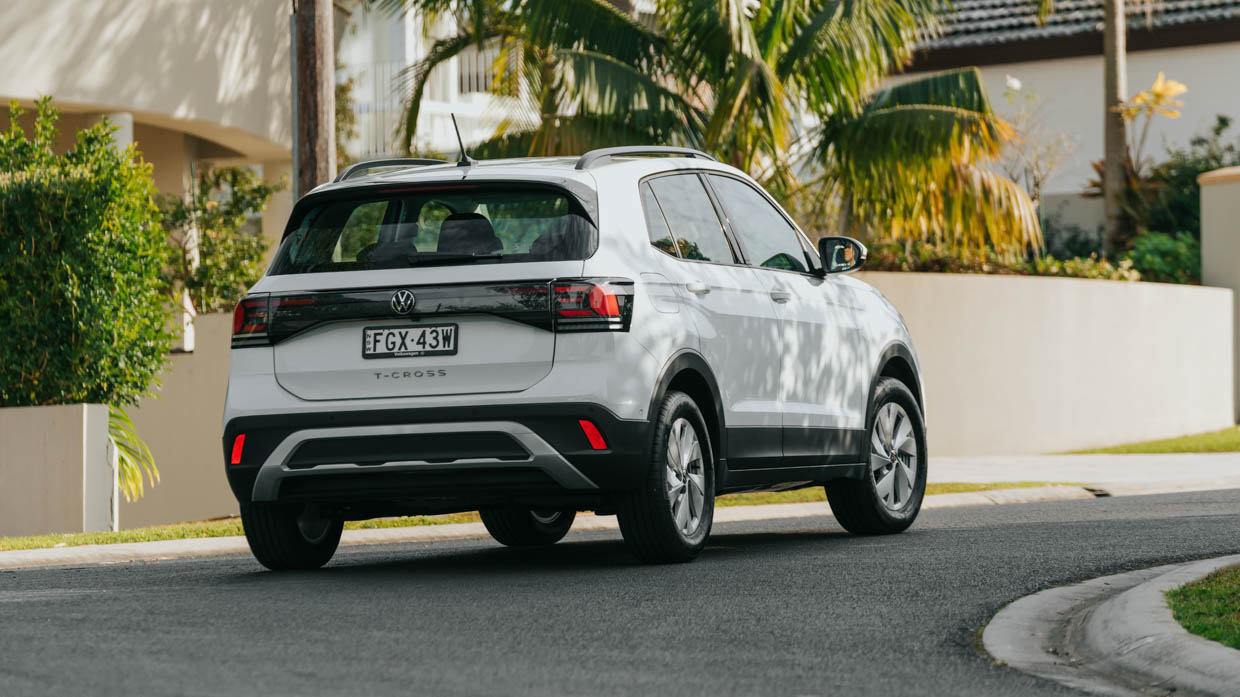
As for the seven-speed dual-clutch, I did feel that there was some doughiness and lag on occasion when getting moving, but on the whole I found it to respond quite well when throttle was applied progressively.
You can also easily shift the old-school physical gear lever, which I appreciate, into Sport mode and take control of the shifts yourself, which you can also do via the steering wheel mounted paddles.
That changed the experience entirely and increased the levels of fun I had with the thrummy engine navigating our windy country loop.
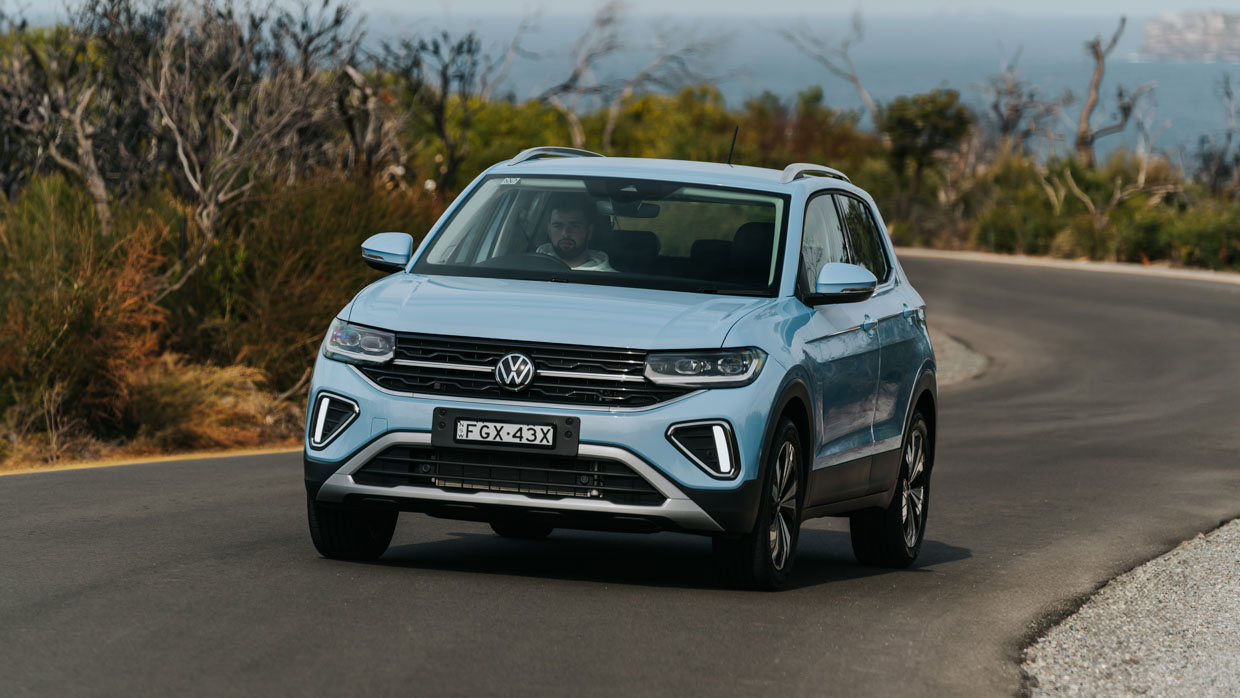
And it was also in this environment where the T-Cross seemed to reveal more of its shine. The steering was direct, faithful and responsive, making for a small SUV that was easy to plant on the road. And there seemed to be an inherent poise and level of ability to the T-Cross that meant I felt I could handle the windy bits confidently, and with a bit of enjoyment.
Don’t get me wrong, it’s no ‘hot SUV’, but it delivered the feeling of a competent, dynamic, well-engineered, and predictable vehicle.
Granted, for many owners most of the time in T-Cross won’t be navigating country roads. Instead it’ll be sitting in peak-hour traffic, but that level of ability is also appreciated in that context too, weaving in and out of traffic and darting through the spaghetti of the inner city, which the T-Cross did with aplomb.
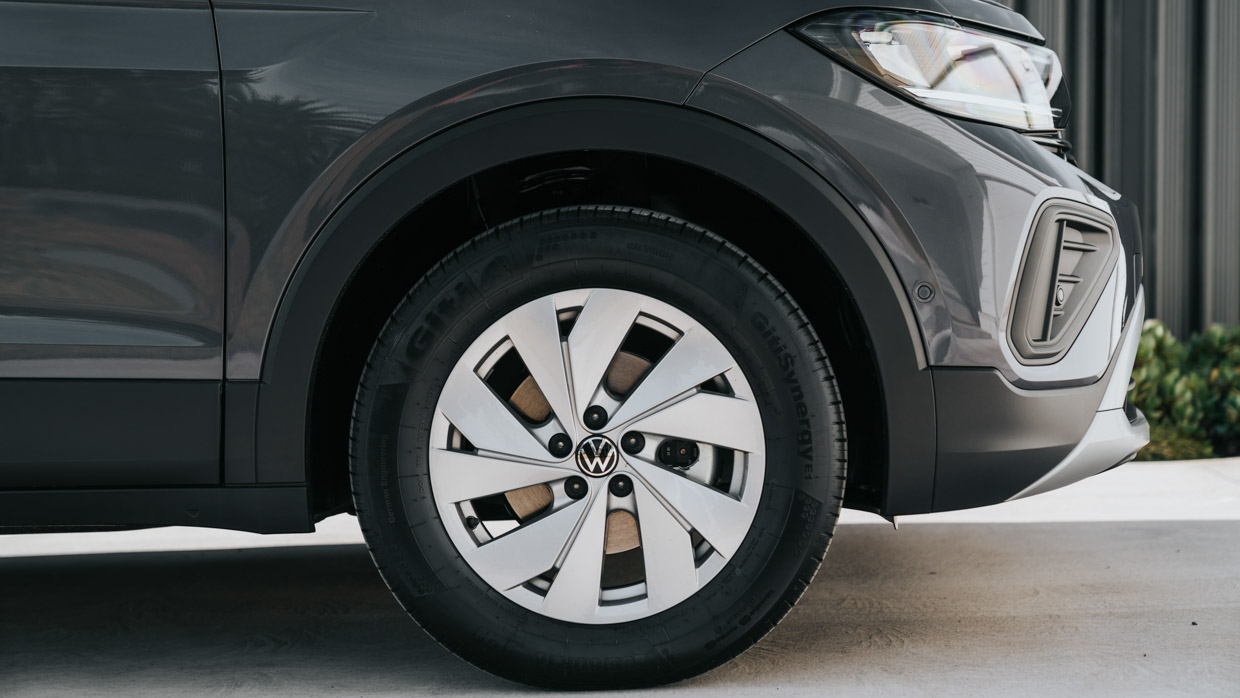
The ride quality was also very good, particularly with the entry-level Life with its 16-inch wheels. This grade soaks up the imperfections of Brisbane roads really nicely, adding to what was overall a very satisfying drive experience.
Driving back to back with the Life, I did feel the Style rode a tad more firmly, and expectedly so given its lower profile 17-inch wheels.
This may not be noticeable to some, and it didn’t ride badly, but for this reviewer, there’s a certain appeal and honesty with the now more old-school and less popular option of chubbier tyres on smaller wheels. The fact that the Life seemed to deliver that bit more suppleness definitely strengthened the appeal of that grade to me.
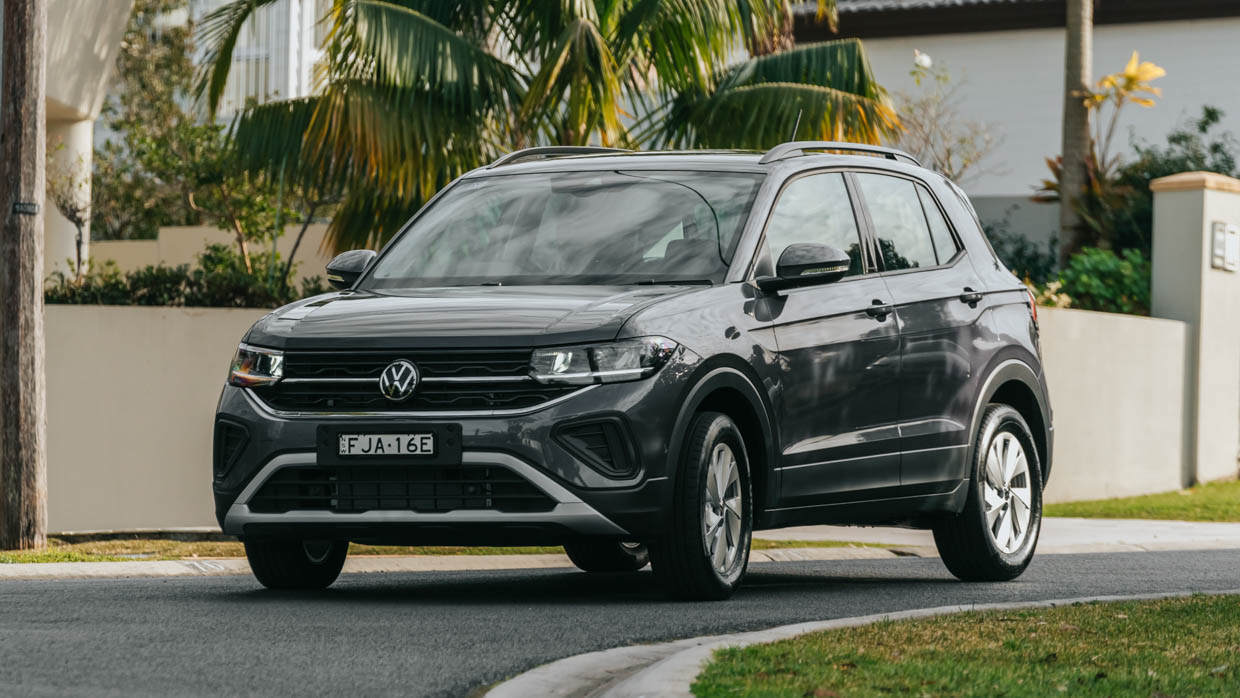
The cabin felt pretty well-insulated overall too, perhaps a bit more tyre noise on the lower profile tyres of the Style, and I also noted some minor general vibrations during our more spirited drive in both variants – nothing alarming, but also potentially revealing the lower-price point of the vehicle as compared to more expensive Volkswagen stablemates.
It’s a pragmatic and functional affair inside the T-Cross, but it’s also appealing.
The seats are comfy in both the Life and the Style; there’s no electric adjustment in either grade, but it was easy for me to find a comfortable driving position, and visibility was good.

Build quality felt of a high standard too, with a general feeling of robustness and solidity around the cabin.
Though, to contrast this, you didn’t have to look for long to find some hard plastics, particularly on door tops, but Volkswagen has increased the amount of softer materials for the facelift.
In terms of design, layout and features, the T-Cross won’t blow you away, but there’s a certain simplicity and ease-of-use that is very likeable – everything is where you expect and falls into hand quite nicely.
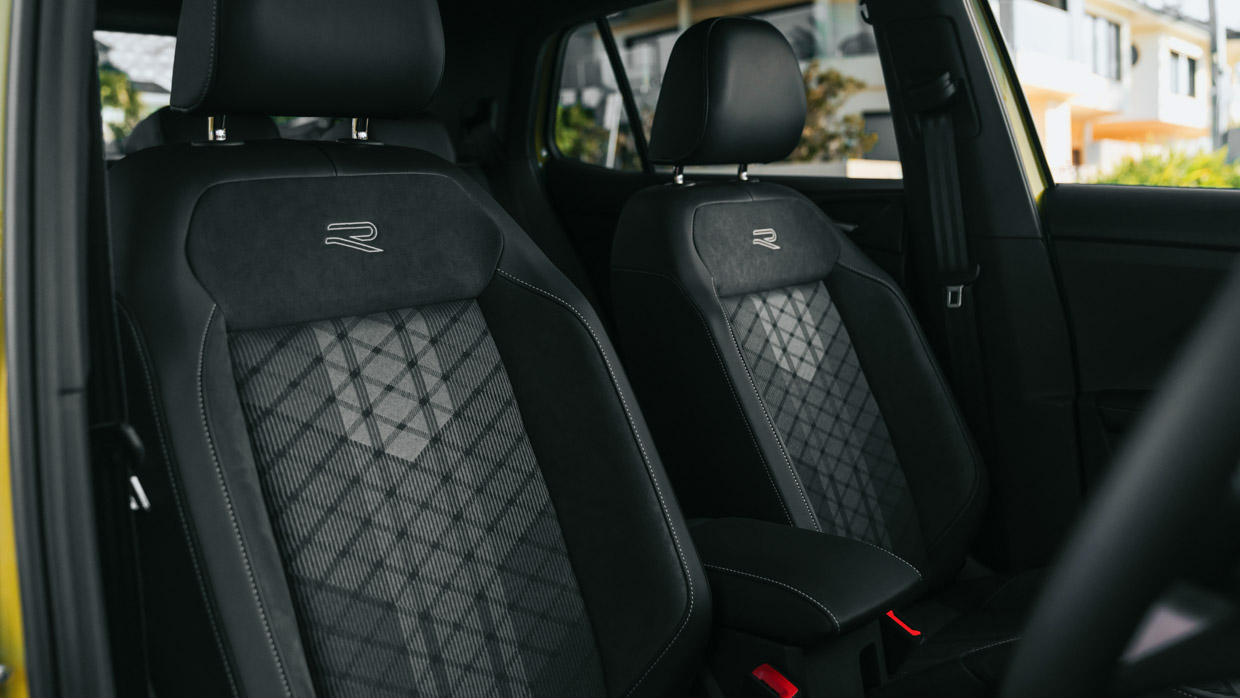

The steering wheel feels good and is nice to behold, the gear lever is functional and easy to use, as is the old-school manual handbrake; the door’s have solid grab-handles, and the media display is positioned nice and high and has lots of short-cut buttons which simplify its functionality.
While the Style gets dual-zone climate control with touch-buttons and sliders, the Life gets old-school dial-controlled air-conditioning.
And while some may look at that as ‘poverty-spec’, I found it refreshing at how easy it was to use and interact with, given how rare it is to find simple climate controls nowadays.
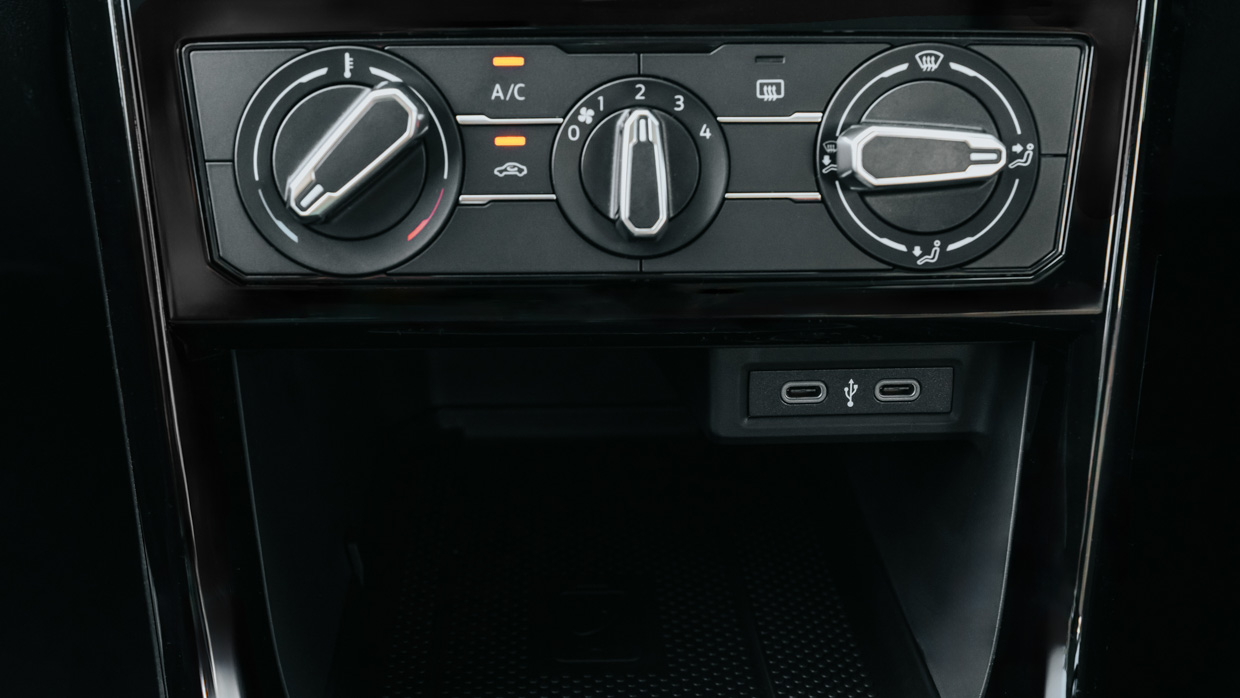
The Life also uses an actual key and barrel to start the vehicle – remember those? – while the Style has push-button start, and also adds a larger digital instrument cluster that also brings with it more configurability and display options.
Many will likely prefer the creature comforts of the Style, but there’s a charm to the more no-frills nature of the Life that appealed to me. It’s not trying to be anything it’s not, it has everything one actually needs, and it’s ultimately cheaper in a segment where price matters.
Regardless, whichever variant you pick, ergonomics are excellent, and I think that older drivers in particular who might be fretting over the drastic technological changes of moving to a modern-day vehicle may appreciate the simplicity of the T-Cross.
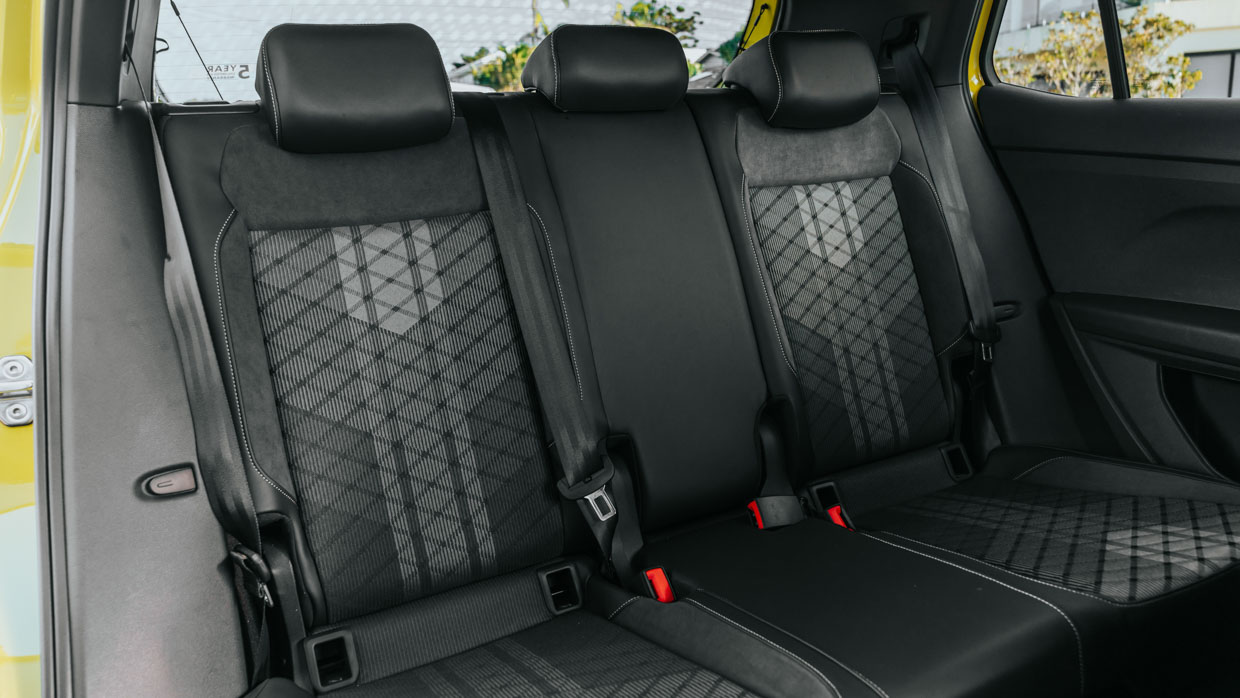
In the rear, there was an adequate amount of room for me – at 183cm, head, leg, toe and knee room was good, and the seats were comfortable.
Fitting five in the back would be a harder task and there was a notable transmission tunnel, as well as no rear air-vents or centre armrest, however there were two USB-C outlets and map pockets behind either front seat.
The back-seats also slide forward and backwards on rails up to 140mm which is a nifty feature that helps with cargo space in the back.
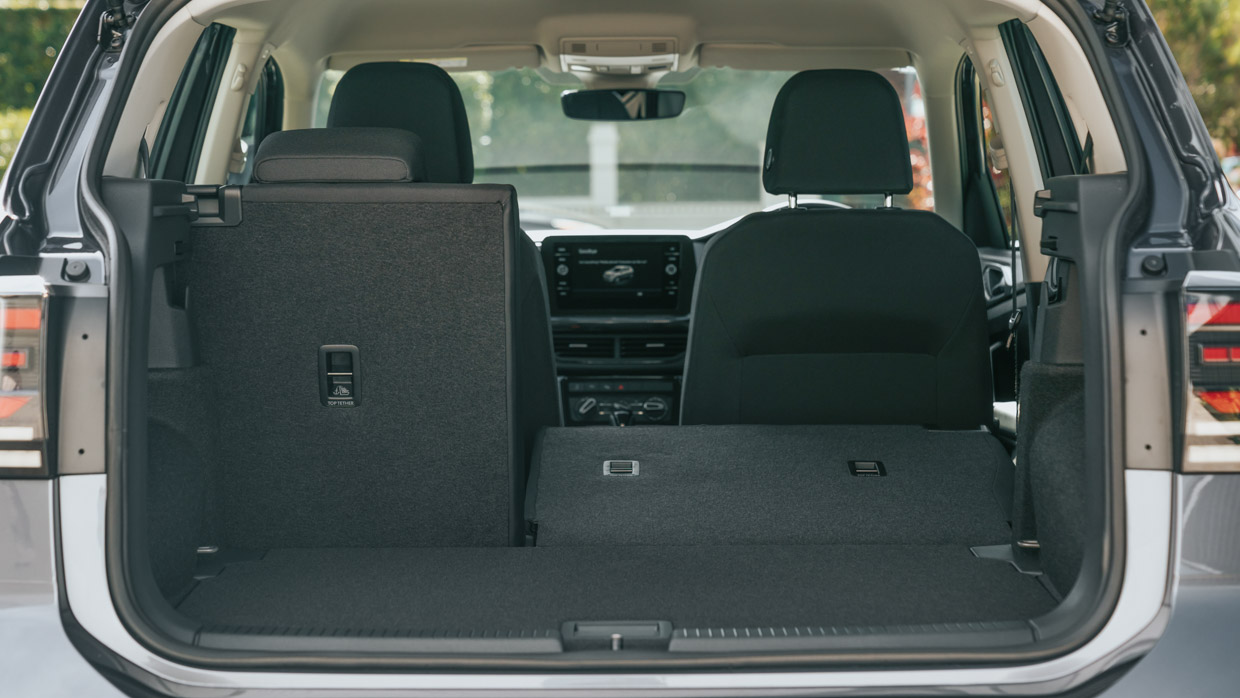
Opening the boot will reveal between 385 and 455 litres of space depending on whether the rear seat is in its forward most position and whether the variable level boot floor is in its highest or lowest setting.
You’ll also find a spacesaver spare wheel in all grades, and a total of 1281 litres of space with the rear seats folded flat.
The Volkswagen T-Cross was crash-tested by ANCAP in 2019 in its pre-facelift form and achieved a five-star safety rating.
Across all variants, it comes standard with active and passive safety and driver assistance features including:
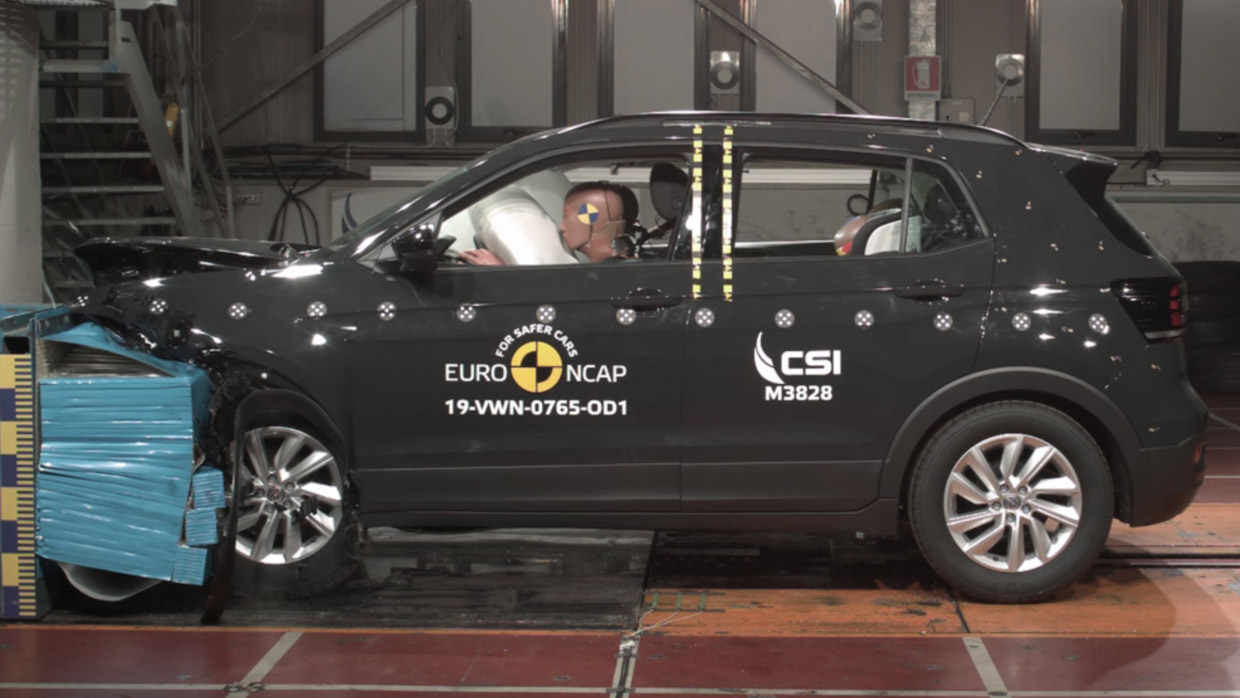
All variants also now come standard with Volkswagen’s Travel Assist which is essentially a semi-autonomous driving assistance that combines functions of the adaptive cruise control with stop & go functionality and other lane assist features.
I wasn’t able to properly test out the safety features during my launch drive, but initial impressions were that the driver assistance wasn’t overly intrusive to the drive experience.
Service intervals for the Volkswagen T-Cross are every 12 months or every 15,000 kilometres, with a total five-year cost of service coming in at $3387 if purchased individually or $2850 for a pre-paid five-year service pack, and $1500 for three years.
It also comes with Volkswagen’s five-year/unlimited-kilometre warranty.

In terms of fuel usage, the T-Cross takes a minimum 95-octane petrol and has a quoted fuel consumption figure of 5.6L/100km.
That’s very good for a non-hybrid vehicle, however if efficiency is your ultimate focus then the clear recommendation from that perspective alone would be a Toyota Yaris Cross, which has a claimed fuel consumption figure of 3.8L/100km from its hybrid-only lineup.
Volkswagen says they set out to achieve three things with the facelifted T-Cross range: to retain what consumers liked about the current T-Cross; to bolster tech and features; and to simplify the lineup. And on this three-pronged front, Volkswagen seems to have delivered what they set out to do.
Based on my first drive, the T-Cross feels like a capable, dynamically-satisfying, practical and ergonomically-friendly small SUV; the added tech and features are appreciated, and the lineup is simple and easy to navigate based on what your preference is.
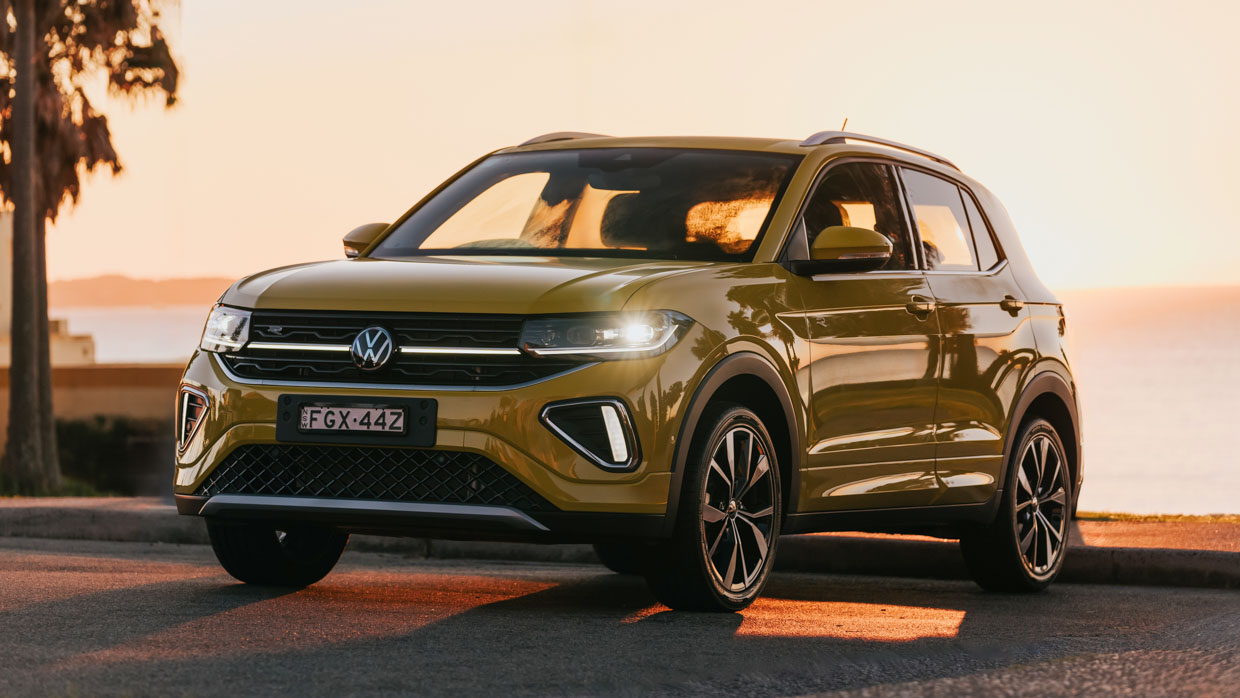
While we can’t make a full and final assessment until we get to spend more time with the T-Cross in the Chasing Cars garage – and drive the R-Line grade – I find personal appeal in the honesty of the base-spec Life variant. The entry grade doesn’t lose out in terms of what’s under the bonnet, and Volkswagen expects that it will represent about 50 percent of the nameplate’s sales volume.
That said, I can appreciate why many would value the additional features of the Style including the styling enhancements, larger wheels, matrix LED lights, bigger digital instrument cluster, keyless entry, and dual-zone climate control.
Either way, the T-Cross is now back in the small-SUV boxing ring; it’s ready for a fight, and it’s certainly presenting as a formidable contender.
Key specs (as tested)
About Chasing cars
Chasing Cars reviews are 100% independent.
Because we are powered by Budget Direct Insurance, we don’t receive advertising or sales revenue from car manufacturers.
We’re truly independent – giving you Australia’s best car reviews.
The estimate provided does not take into account your personal circumstances but is intended to give a general indication of the cost of insurance, in order to obtain a complete quote, please visit www.budgetdirect.com.au. Estimate includes 15%^ online discount.
^Conditions Apply
Budget Direct Insurance arranged by Auto & General Services Pty Ltd ACN 003 617 909(AGS) AFSL 241 411, for and on behalf of the insurer, Auto & General Insurance Company Limited(ABN 42 111 586 353, AFSL 285 571).Because we don’t know your financial needs, we can’t advise you if this insurance will suit you. You should consider your needs and the Product Disclosure Statement before making a decision to buy insurance. Terms and conditions apply.
Indicative quote based on assumptions including postcode , 40 year old male with no offences, licence suspensions or claims in the last 5 years, a NCD Rating 1 and no younger drivers listed. White car, driven up to 10,000kms a year, unfinanced, with no modifications, factory options and/or non-standard accessories, private use only and garaged at night.
^Online Discounts Terms & Conditions
1. Discounts apply to the premium paid for a new Budget Direct Gold Comprehensive Car Insurance, Third Party Property Only or Third Party Property, Fire & Theft Insurance policy initiated online on or after 29 March 2017. Discounts do not apply to optional Roadside Assistance.
2. Discounts do not apply to any renewal offer of insurance.
3. Discounts only apply to the insurance portion of the premium. Discounts are applied before government charges, taxes, levies and fees, including instalment processing fees (as applicable). The full extent of discounts may therefore be impacted.
4. We reserve the right to change the offer without notice.